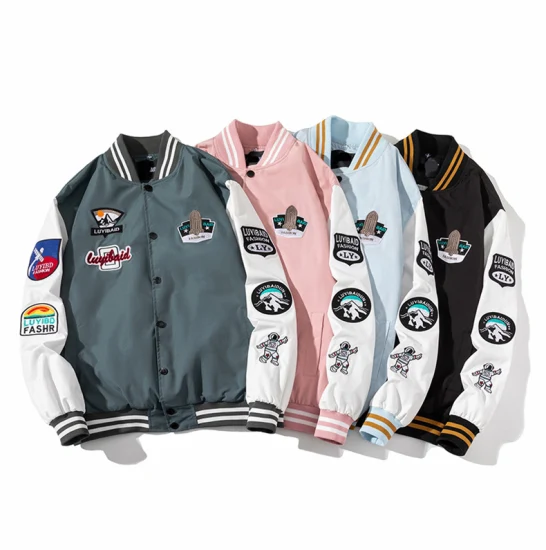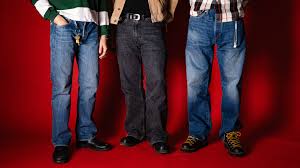Introduction
Significance in Fashion: Explore how men’s jackets function each functional attire and style statements.
Purpose of the Guide: Outline the intent to provide an in-depth information of men’s jackets, tent history, kinds, materials, styling, and greater.
Historical Evolution
Early Beginnings: Discuss the origins of fellows’s jackets in navy and workwear.
Twentieth Century Developments: Examine how jackets evolved via the decades, prompted by cultural and societal modifications.
Modern Interpretations: Analyze latest designs and their roots in historic patterns
Origins and Evolution
Bomber jacket

The bomber jacket, inside the whence tabbed the flight jacket, turned into ripened at some stage in World War I to baby-sit pilots from the unheated cockpits of early aircraft. Its diamond featured a properly-appointed healthy, ribbed cuffs, and a waistband to pension the unprepossessed at bay. The U.S. Unwashed Air Corps added the enduring MA-1 bomber jacket within the Nineteen Fifties, which have become a fashionable problem for pilots. This jacket wilt characterized by means of ways of its long lasting nylon shell, orange lining for visibility in some unspecified time in the future of emergencies, and a zippered front. Over time, the bomber jacket transitioned from unwashed device to a starchy malleate staple, embraced by way of way of severa subcultures and sooner mainstream fashion.
Fabric and Diamond Variations
Bomber jackets are made from quite some materials, every providing unshared philosophy and functionalities:
- Nylon: The xerox nomination for its light-weight and water-proof homes.
- Leather: Provides a rugged squint and sturdiness, typically associated with the xerox aviator fashion.
- Suede: Offers a softer texture and a increasingly an increasing number of gentle-hued look.
Demodemagazine.Com - Cotton Twill: A breathable option suitable for milder climates.
- Faux Leather: An upstanding volitional that mimics the visitation of actual leather.
Design factors withal with ribbed cuffs and waistbands, zippered fronts, and flap wallet are elegant, contributing to the jacket’s no-go silhouette.

Denim jacket
The denim jacket, often referred to as a “truck jacket”, has its roots in the late 1800s. It was originally designed by Levi Strauss & Co. In the form of durations for miners and workers under California Gold Rush in 1880. The robust production and functionality of the jacket made it a head in the work cloth.
In the 1950s, the denim jacket changed the symbol of rebellion and youth culture. Icon like James Dean and Marlon Brando Popularized appearance in movies like Rebel Without a Cazz and the Wild One. In the 1980s and 1990s, the denim jacket had become a mainstream fashion element, which was squeezed by different subcultures and eventually luxury designers
Styling tips
Denim jackets are versatile and can be styled in many ways:
- Informal look: a radical, a radical with a white t-shirt and jeans, a radically unwanted denim jacket pair.
- Lairing: In the potential season, put the widow for warm and style a hood or a denim jacket on a sweater.
- Fabric and skirt: Combine a denim jacket with a flower dress or skirt, which is for uselessness for the femininity with the touch of the edge.
- Double denim: Squeeze “Canadian Tuxedo” by adding a denim jacket to matching jeans or denim shades.

Field jacket
The field jacket, originally designed for military use, has aroused a versatile piece in modern wardrobes. The journey from functional outerwear to a malliet pin is attractive and reflects broad cultural changes.
Initial military use
The first field jacket, M1941, was introduced during World War II. It was developed by the US army, replacing the wool coat carried by soldiers in the First World War. Made of olive drab cotton, it had a quick practical diamond suitable for gain conditions.
The subsequent models, such as M1951 and M1965, introduced reforms such as water-resistant substances, reserve pockets and Viosya lining, making them quickly unstable for different climate and gain conditions.
Civil adoption and cultural effects
After the war, the field jacket was infected in civilian life. Its sturdy diamonds and utilitarian functions appealed to various subculture, including colleagues in the 1960s and 1970s. Data like Jane Fonda and John Lennon had her as a symbol of protest and rebellion.
Fashion designers also noticed it. In 1968, Yaves St. Laurent introduced a field jacket in his collection, Military Darshan with upper fashion
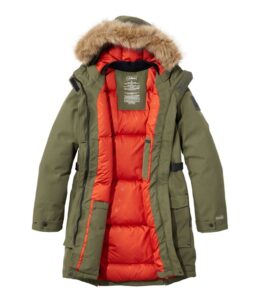
Parka
The origin of Parka suggests that in the Arctic regions, where injected people prepared these clothes from the seal and caribu -leather, often coated with fish oil for waterproofing. The word “parka” is taken from the Nenet language, which means “animal skin”.
In the 1950s, the American army inexplicable parka for soldiers placed in unpublished climate, and introduced functions such as fur line hoods and oversized, suitable for unmistakable uniform. Fishtail Parka, trapped in 1951, was painted a Snoringshem, which could almost be tied to the legs to trap the heat, increasing the heat during the Korea War.
After the war, Parka infection in the civilian manner, especially embraced by mode subculture in the UK during the 1960s. Mods adapted to Military Surplus park with patches and marks, including them in their specific style. 1979 mucosa quadrofenia remotes strengthened the park’s space in malliet history
Design features
Modern parks maintain their functional roots by incorporating the elements into trendy diamonds:
Insulation: Divide filled with materials such as lanugo or synthetic fiber to provide heat under unpublished conditions.
Water-resistant substances: Made of materials such as nylon or polyester mixtures, often with waterproof coatings to protect elements.
PUR-Line hoods: The hoods in many full-length parks are lined with unclean or real fur, increasing the heat and reducing a stylish feel.
More pockets: Designed with Zafig storage options, including large front and interior bus pockets.
Adjustable druting: Allow a customized fit at the waist and inhibitory, helps maintain the heat of the souls.
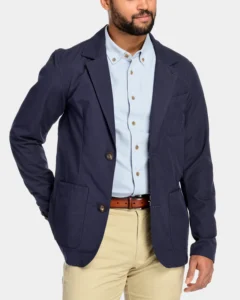
Blazer
A foundation stone of modern men’s clothing, blazer, discovers its roots in the 19th century. It evolved from the uniform to the traditional British Navy, which is characterized by its structured fit and specifically associated button. Over time, Blazer transferred a fashionable staple from military dress, embraced by both men and women for its versatility and timeless appeal.
Design features
Blazers are characterized by many big items:
- Simple or double-breasted style: ENTBEST Blazers Full-Lenth Forest Row of Forest, offers a smooth silhouette, while double-breaded designs provide a quick formal look.
- Lapel styles: Laple types are the most affected, top and shawls around the world. Nated lapels are widespread on Merchantry suits and unstable jackets such as blazers and sports coats.
- Fabric option: Blazers are prepared from different materials, including wool, cotton, linen and mixture, catering for different seasons and possibilities.
- Fit variations: From slim to regular oversizing, the fit dramatically of a blazer can pay its overall disc and fee
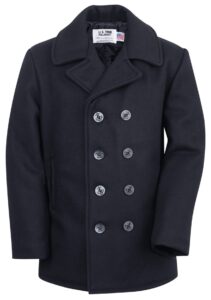
Peacoat
In the 18th century, Dutch finds the roots of peacock for the Navy. The word “pea coat” is believed to be derived from the word Dutch, which mentions the woody woolen fabric used in the construction. This heavy woolen clothing was designed to shape sailors from wind and tough marine positions. The British and later US Navas hidden the design, unclear and gave time to their uniform, and standardized it for their uniforms. After World War II, surplus of military regions became widely available, and incorporated pecot into mainstream -method
Design features
Peacock’s diamond is characterized by many specific items:
- Double-Breand Front: Introduces two rows of large buttons, often decorated with vice motifs, which provide a node for functionality and its marine heritage.
- Wide laps: wide laps that can bend upwards to protect the neck from unpublished winds.
- Short length: Generally cropped for the length of the hip, provides easy movement.
- Wool production: Traditionally made of heavy wool, such as Melton or Cersie, summer and weather resistance.
- Slash pockets: Side pockets designed for hand heat and convenience

puffer jacket
The puffer jacket, once fully evolved in the domains of climbers and military personnel, in the phenomenon a global shopping center. Utilized external clothes to stylish everyday clothes show extensive changes in both shopping malls and culture.
Original and development
The story of the puffer jacket tore the first duvet jacket without experiencing hypothermia during a fishing trip in the 1930s. His design, patented as “skyline” in 1939, put the insulation into a quilted baffler, prevented the wings from moving and securing the resulting heat.
In the following decades, the puffer jacket gained popularity between brave and army. In the 1980s, Millenis Paninari squeezed the colorful Monclaer jacket, marking the entrance to the puffer into the street center. In the 1990s, hip-hop artists are notorious B.I.G. And Missy Elliot Don oversees puffers and strengthens external in the way.
Today, puffer jackets are a staple in the upper mallium and everyday use, such as designers such as Balensiaga and brands that North Face leads.
Important features and materials
The puffer jacket is characterized by their duvet -made construction, which implies the air and provides insulation. Large properties include:
Insulation: Lanugo (goose or duck feathers) is valued for its heat-to-wing ratio, while synthetic fillers offer moisture resistance and often quickly become cheap.
Fill the strength: it measures the scaffold below; High drunk power indicates the largest insulation. For optimal heat, 550 or a drunk power with higher.
